Tom Matano, the automotive designer who helped create one of the most beloved roadsters in history, the original Mazda MX-5 Miata, has died at the age of 76. His passing marks the end of a career that reshaped how many thinks about what a sports car can and should be: lightweight, driver-focused, emotionally resonant, and joyously simple.
Early Life and Education
Born in Japan in the early 1950s, Matano spent his formative years immersed in a culture rich with craftsmanship and design aesthetical values. But his breadth of influence would soon span continents: young Matano moved to the United States to pursue industrial design, ultimately graduating from the ArtCenter College of Design in Pasadena.
The ArtCenter is one of the premier institutions for automotive and industrial designers, where form, proportion, and aesthetic philosophy are taken as seriously as performance. This educational background, grounded in both technical and artistic training, would become one of the hallmarks of Matano’s work.
Early Career and Influences
After completing his studies, Matano’s career took him through various major automakers, including stints at General Motors and BMW in both the United States and Europe. These roles in advanced design studios allowed him to experiment with form and aesthetics in diverse settings, developing a synthesis of western automotive flair and Japanese minimalism.
It was during these early years that he developed what would become central to his design philosophy: the belief that great design should not merely look striking but also stir emotional engagement.
Joining Mazda: A New Vision
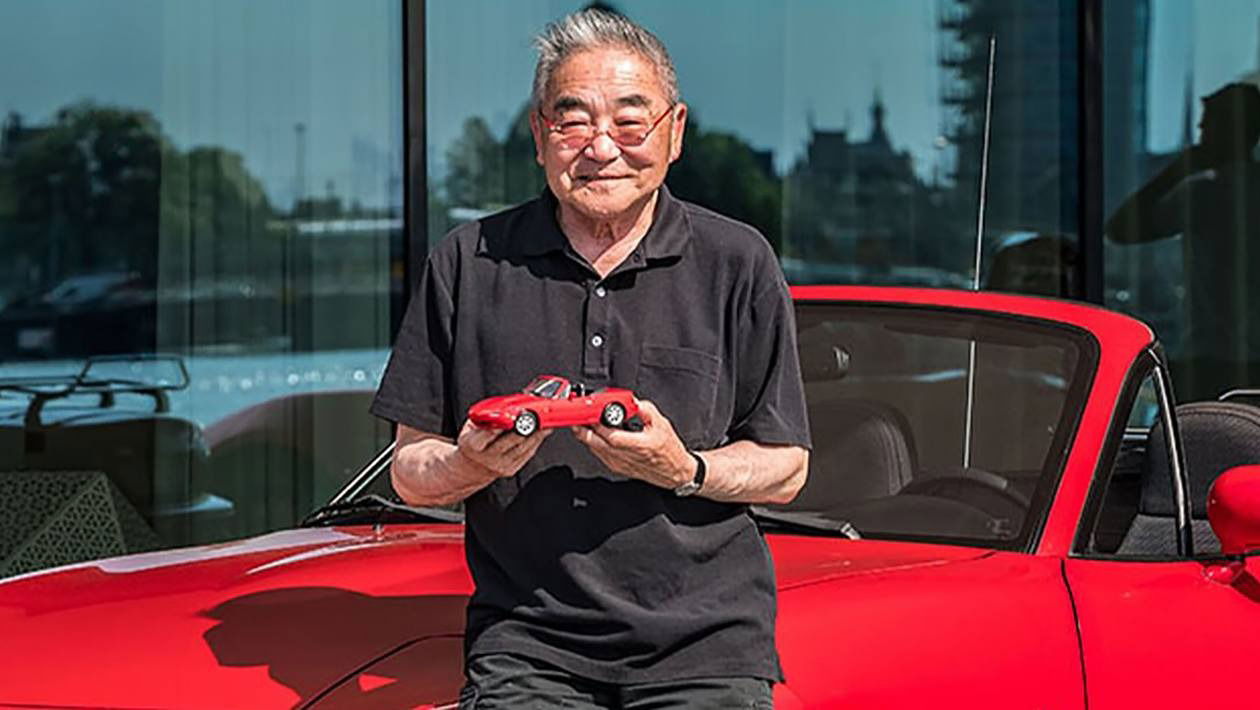
In 1983, Matano joined Mazda at a pivotal moment for the Japanese automaker. Mazda was seeking to move past mere reliability and practicality, aiming instead to cultivate a brand identity that embraced emotion, performance, and connection with drivers.
Matano was placed in charge of Mazda’s North American design studio, giving him both opportunity and responsibility. It was in this capacity that Matano began shaping what would become the MX-5 Miata.
Internally known as “Project Phoenix,” the goal was to resurrect the spirit of the classic British roadster—cars like the Lotus Elan and the MGB—but to do so with modern reliability, safety, and build quality. Matano drew inspiration from those earlier cars, not to copy them, but to distill their joy, their purity, and their connection between driver and machine.
Jinba Ittai and the Birth of the MX-5
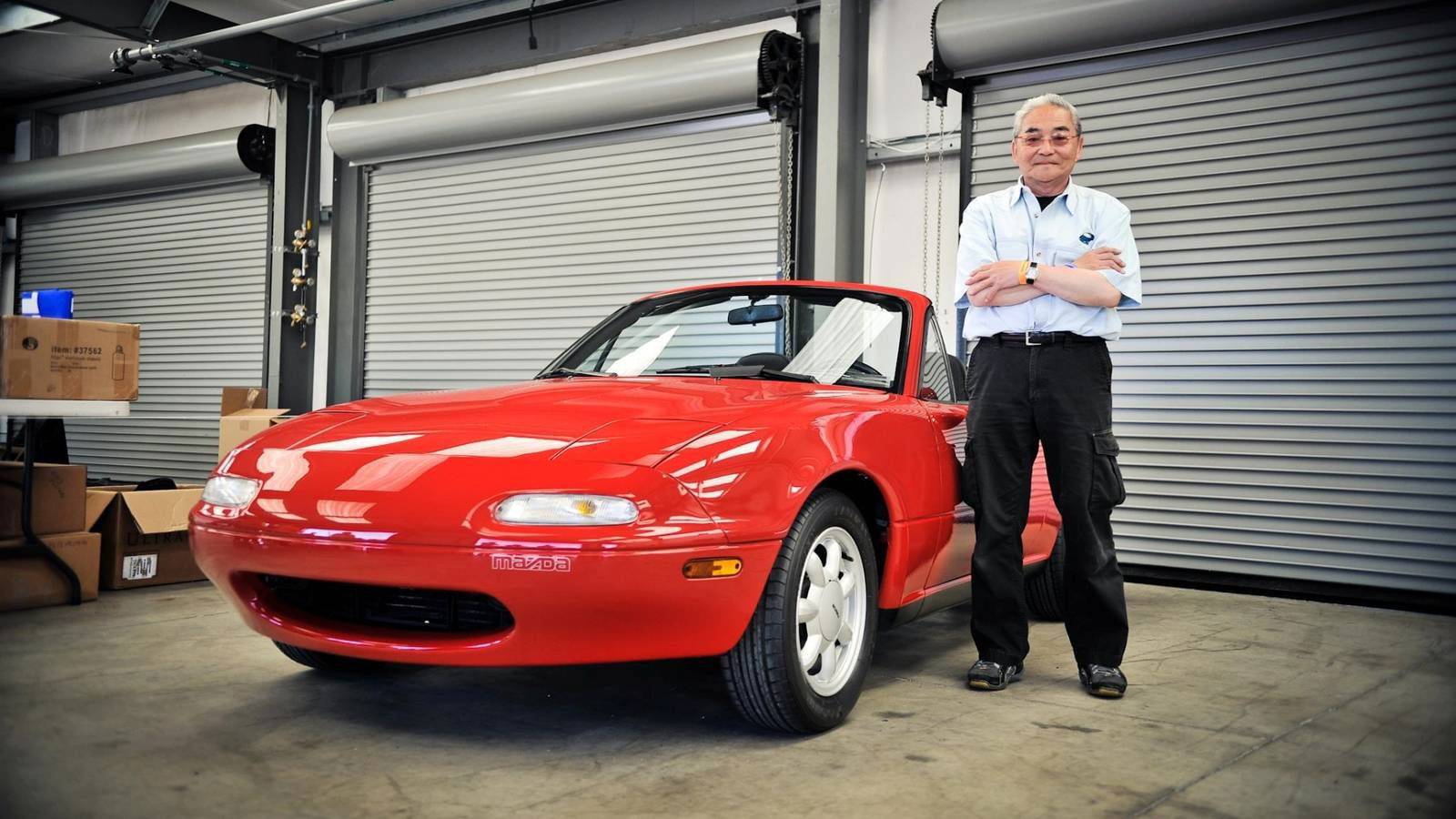
A central guiding principle in Matano’s work on the MX-5 was the concept of Jinba Ittai, a Japanese phrase roughly meaning “horse and rider as one.” This idea, that the car and driver become one entity, informed every decision: from the exterior shape and proportions, to the layout of the cockpit, to how much weight to carry (or leave off). The result was something rare: a car that felt alive in the hands of the driver, not merely a machine to be driven.
The first‐generation MX-5 (often called the “NA” model) debuted in 1989, and it was a revelation. Rear-wheel drive, balanced weight distribution (50:50 front to rear), and a light, simple layout with pop-up headlights (in fact, the first and last among Miatas to have them) gave the car charm, performance, and a purity of experience.
It wasn’t about high horsepower or aggressive styling—it was about joy, connection, and that wind-in-your-hair feeling.
The Miata Phenomenon
The Mazda MX-5 Miata rapidly became a legend, beloved by critics and enthusiasts alike. Its success was not occasional or fleeting—it endured. As of August 2025, over 1.2 million units of the MX-5 had been sold worldwide. Through its multiple generations—while performance, safety, and features evolved—the core of the Miata remained steadfast to Matano’s original vision: lightness, balance, simplicity, driver engagement.
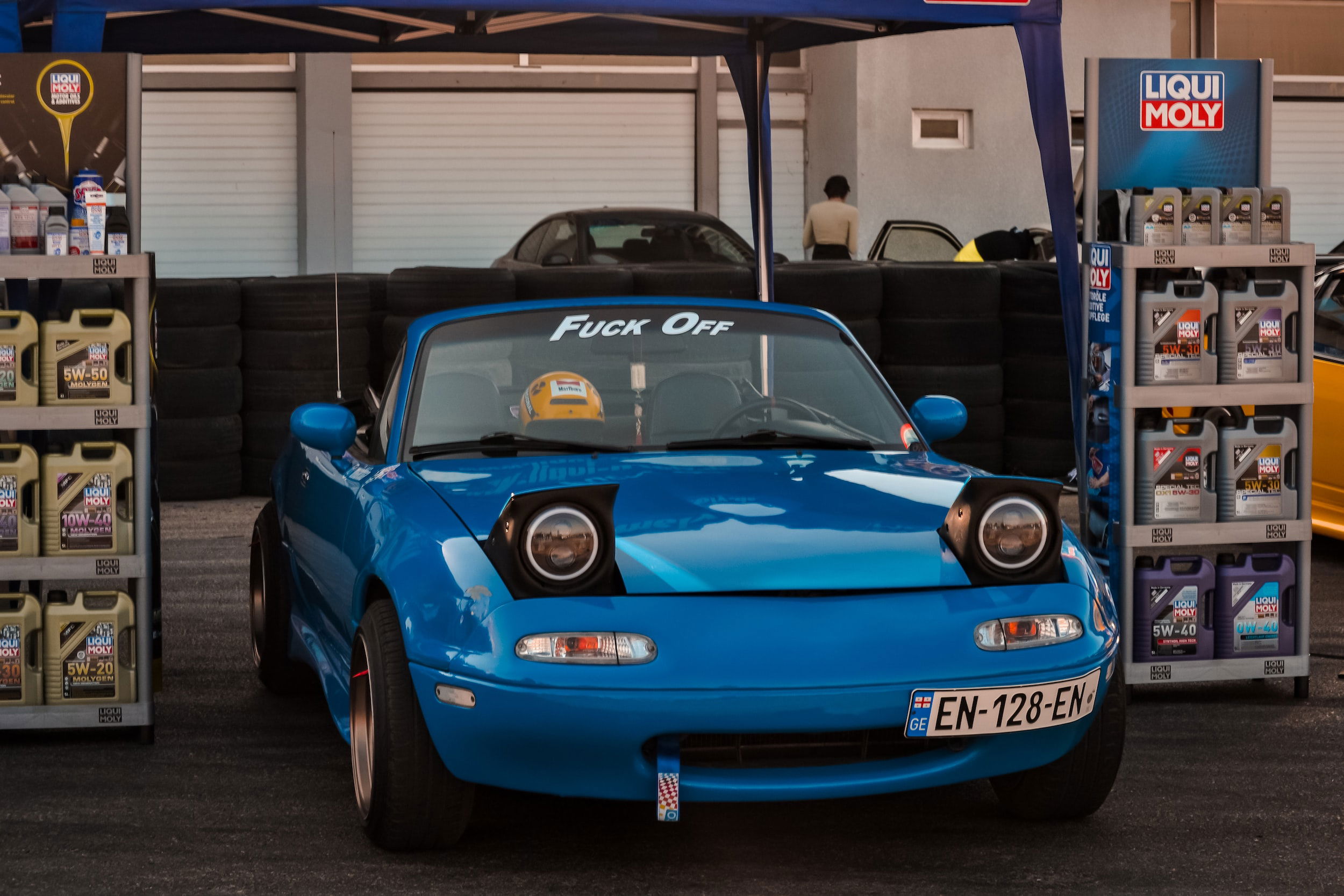
The fourth generation (ND) models, while more modern in many respects, still carry the DNA of Matano’s philosophy. It’s a rare instance in the automotive world where a model remains faithful in spirit—and in many of its defining traits—over nearly four decades. Comparisons between the first and the latest underscore this continuity.
The original NA was powered by a 1.6-liter engine with about 116 hp. It could go from 0-60 mph in approximately 9.2 seconds, and had a top speed around 116 mph. By contrast, the current ND version (as of 2025) offers roughly 181 hp from a 2.0-liter naturally aspirated engine, with 0-60 times closer to 6.7 seconds and a top speed of about 139 mph. Yet despite those performance gains, the car still drives with the same soul: balanced, lightweight, and connected.
Beyond Miata: A Broader Legacy
While the MX-5 is undoubtedly Matano’s most famous achievement, his influence at Mazda was broader and more profound. He had a hand in designing the RX-7 (both FC and FD generations); both are considered icons in their own right, especially among fans of rotary power.
His contributions also meshed into Mazda’s evolution during the 1990s and early 2000s, helping the company cultivate an identity of “driver engagement, clean lines, purposeful engineering.”
In the early 2000s, Matano shifted somewhat from design of cars to design of designers. He became Executive Director of the School of Industrial Design at the Academy of Art University in San Francisco. There, he mentored younger designers, imparting not just technical skills or aesthetic taste, but his belief that design must serve humanity and emotion.
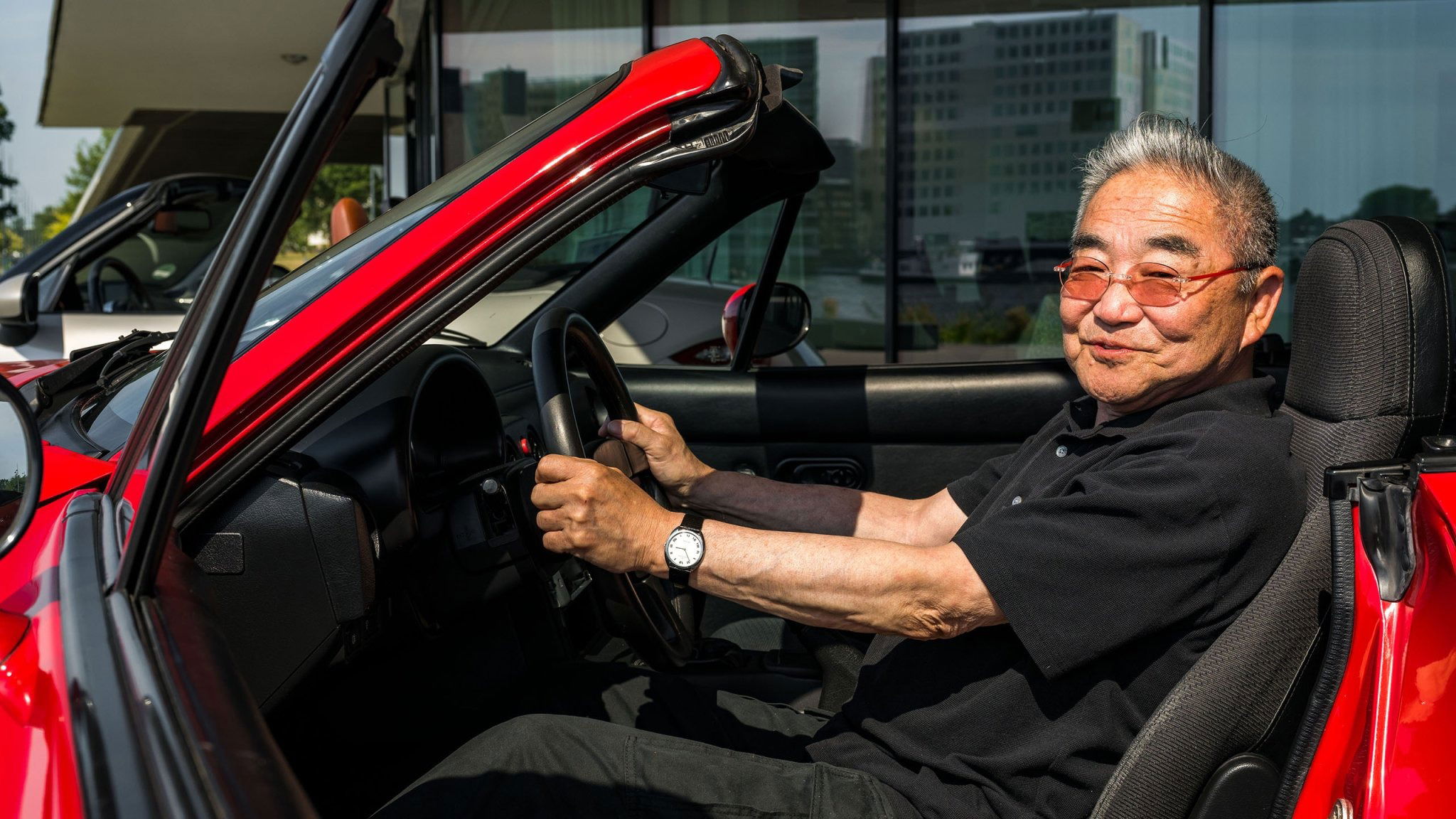
He emphasized understanding ergonomics, the interplay between human senses and machine behavior. Perhaps most importantly, he taught that the emotional impact of design—how something feels to use, to operate, to live with—is as vital as how it looks. One of his recurring teaching mottos was: “Good design is when nothing more can be taken away.” Rather than adding complexity, it’s about removing what is unnecessary until what remains is essential.
That ethos was clear in the Miata, and in many of his later works, whether in full-scale designs or in mentoring younger talents.
The Impact and Why It Matters
Why does Tom Matano’s death (at 76) feel like the closing of an era? Because he was key in creating something very few automotive designers manage—a vehicle that defines a category, becomes beloved across generations, and remains relevant without betraying its roots. In a time when many sports cars have become heavier, more complex, more powerful—but sometimes less precise and less connected—Matano’s design reminds us there is beauty in restraint.
The MX-5 isn’t about being the fastest or the flashiest; it’s about being the most honest. It represents a balance between engineering and artistry. Between usability and passion. Between simplicity and joy.
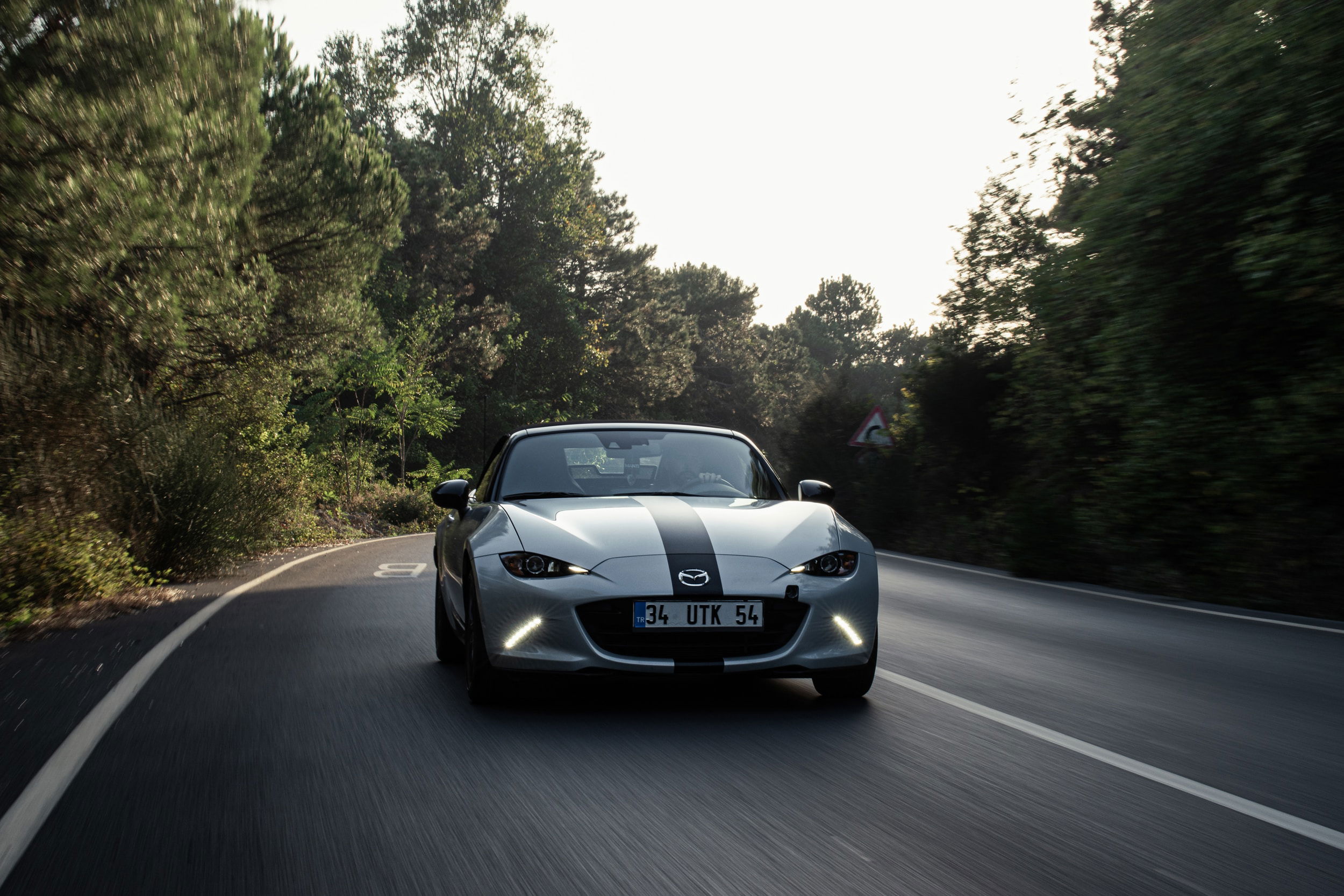
Matano’s contributions ripple outward. For those who drive, the MX-5 often becomes more than a car—it becomes a companion. For those who design, it becomes a benchmark: How do you make something that is both pure and practical? That is light, safe, reliable, yet still fun? That is beautiful without being ostentatious?
Passing, Remembrance, and Continuity
As of this writing, reports confirm that Tom Matano has passed away at 76. While details of his death have not been made prominent in the sources, the impact of his life and work is evident in the tributes and reflections within automotive circles. Enthusiasts and industry observers alike recognize that what Matano built—the philosophy, the aesthetics, the legacy—will live on through the cars he helped design and the people he mentored.
The MX-5 family continues.
Newer models will carry Matano’s DNA forward: lighter weight where possible, driver-first ergonomics, purity of form, emotional engagement—because these are not just features; they are the essence of what he believed design should be. For Mazda, and for automotive design as a whole, Matano’s passing is a moment to reflect on what designing a car could be when it is done not just as engineering, but as craft.
On what a driving experience should aspire to: not just speed or specs, but delight, connection, feel.
A Final Farewell
Tom Matano might not have been as famous in popular culture as some industry names, but among those who care about cars, design, and driving, he was—and remains—one of the greats. He helped create not just a car, but a philosophy. He helped prove that less can be more. That simplicity can be deeply powerful. That your connection with a car can matter as much as its horsepower or its top speed.
For every MX-5 that rolls off a showroom floor, for every open-top drive on a winding road, Matano’s influence will be felt. His designs will keep inspiring smiles, stirring memories, and reminding us that sometimes, joy is simply being behind the wheel of something well-made, light, honest—and connected. Rest in peace, Tom Matano.